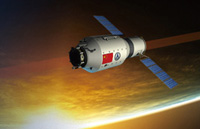A dream sparked by Top Gun
By Zhao Lei (China Daily) Updated: 2016-08-02 08:12Like many aviation fans, I love Top Gun, the legendary 1986 action movie that starred Tom Cruise and the F-14 Tomcat fighter jet. The movie implanted the idea in me that being a fighter pilot on an aircraft carrier is one of the coolest and riskiest jobs in the world.
Impressed by the film, I started learning about aircraft carriers. I wished that my country could have at least one such ship and that pilots of the People's Liberation Army Navy could fly advanced planes to patrol the oceans.
However, when I first watched the movie, about 16 years ago, the PLA Navy only had a few small, antiquated destroyers and frigates and decades-old submarines. Having an aircraft carrier and a carrier strike group seemed like a pipedream.
Time flies. The passing years have witnessed my transformation from student to a military news reporter and I've written many stories about the rapid development of the Chinese military. I watched as the nation's first aircraft carrier, the CNS Liaoning, entered service in 2012, and when it conducted a strike group drill in the South China Sea a year later.
I have visited the carrier four times and spoken with many of those who serve on her, from the captain to the lowest-ranked sailors. I spent my 32nd birthday accompanying the vessel's deputy commander on his daily tour of inspection when the carrier was taking part in a multi-vessel exercise in the South China Sea.
I think it's fair to say I know the ship better than most Chinese people. However, I had never had the opportunity to interview a J-15 pilot until last month, when I was one of a small group of Chinese reporters invited to the Navy's carrier-based aviation unit to cover Zhang Chao's death.
The pilots I spoke with looked sad because their brother officer had died in the course of duty, but they did not seem depressed.
"We all know there are risks behind what we do, but we don't think about them too much," Captain Sun Baosong, deputy commander of the J-15 squadron, told me. Sun trained with Zhang at the carrier-based aviation unit.
"What we need to do now is to perform our duties well - that's what I believe Zhang would want us to do," the senior pilot said.
Lieutenant Yuan Wei, who also trained with Zhang, said senior officers including Dai Mingmeng, the unit's commander, took the lead and flew J-15s after the accident to inspire the other pilots. "We trust our leaders," he said.
The stronger you want to be, the more risks you have to handle. This has never been truer than for today's Chinese Navy. I don't think this will be the last obstacle the Navy will have to overcome before it builds a strong aircraft carrier force, but I do believe that it won't be long before China's Navy pilots are patrolling the oceans.
- Guangdong and neighboring areas brace for Typhoon Nida
- Geneticist defends his groundbreaking technique
- New Hainan port opens as annual fishing ban ends
- Navy widow tells of pain of husband's death
- China's lunar probe confirms no water on the moon
- Minister: PLA to firmly protect maritime rights
- China raises alert level ahead of Typhoon Nida
- Japanese suspect detained in security inquiry
- China starts building its first polar icebreaker
- China warns of typhoon, floods









